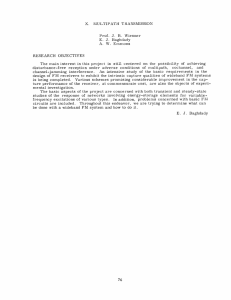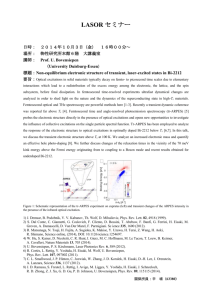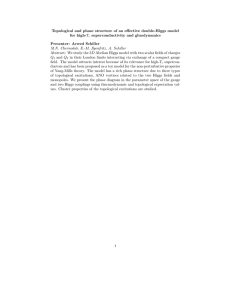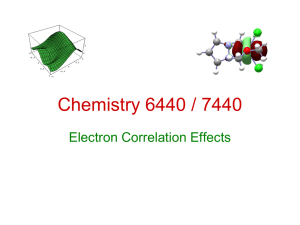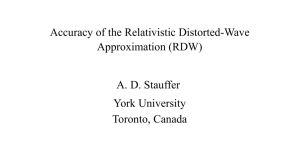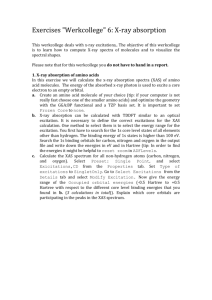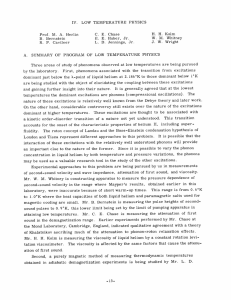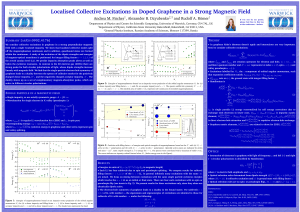(1)
advertisement
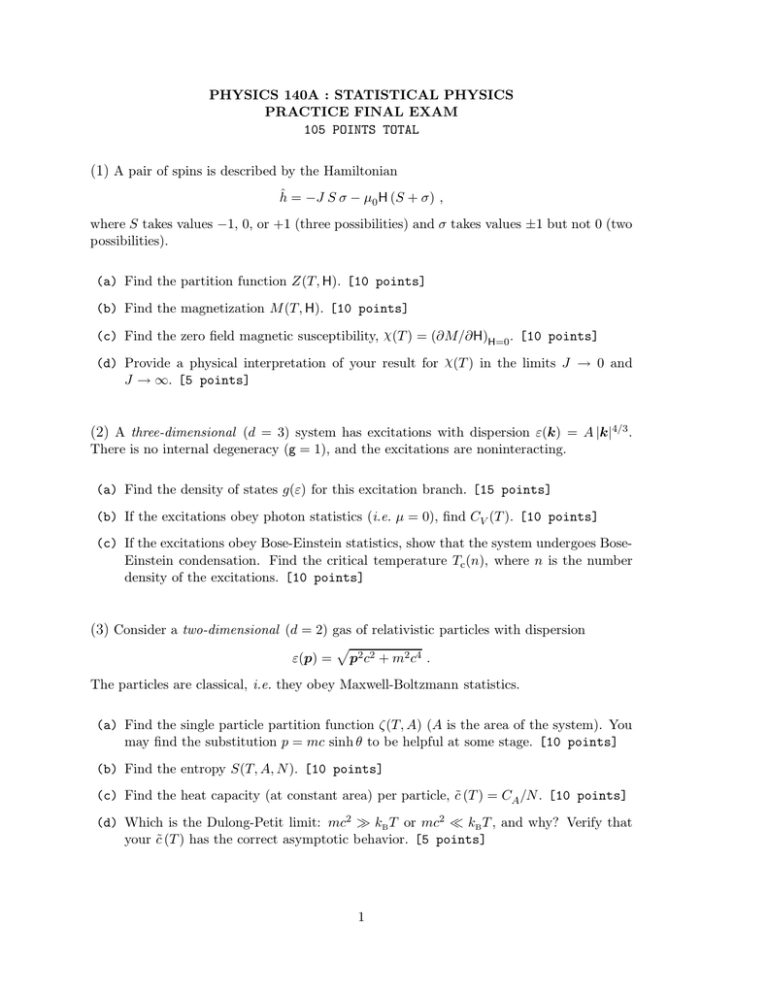
PHYSICS 140A : STATISTICAL PHYSICS PRACTICE FINAL EXAM 105 POINTS TOTAL (1) A pair of spins is described by the Hamiltonian ĥ = −J S σ − µ0 H (S + σ) , where S takes values −1, 0, or +1 (three possibilities) and σ takes values ±1 but not 0 (two possibilities). (a) Find the partition function Z(T, H). [10 points] (b) Find the magnetization M (T, H). [10 points] (c) Find the zero field magnetic susceptibility, χ(T ) = (∂M/∂H)H=0 . [10 points] (d) Provide a physical interpretation of your result for χ(T ) in the limits J → 0 and J → ∞. [5 points] (2) A three-dimensional (d = 3) system has excitations with dispersion ε(k) = A |k|4/3 . There is no internal degeneracy (g = 1), and the excitations are noninteracting. (a) Find the density of states g(ε) for this excitation branch. [15 points] (b) If the excitations obey photon statistics (i.e. µ = 0), find CV (T ). [10 points] (c) If the excitations obey Bose-Einstein statistics, show that the system undergoes BoseEinstein condensation. Find the critical temperature Tc (n), where n is the number density of the excitations. [10 points] (3) Consider a two-dimensional (d = 2) gas of relativistic particles with dispersion ε(p) = p p2 c2 + m2 c4 . The particles are classical, i.e. they obey Maxwell-Boltzmann statistics. (a) Find the single particle partition function ζ(T, A) (A is the area of the system). You may find the substitution p = mc sinh θ to be helpful at some stage. [10 points] (b) Find the entropy S(T, A, N ). [10 points] (c) Find the heat capacity (at constant area) per particle, c̃ (T ) = CA /N . [10 points] (d) Which is the Dulong-Petit limit: mc2 ≫ kB T or mc2 ≪ kB T , and why? Verify that your c̃ (T ) has the correct asymptotic behavior. [5 points] 1



